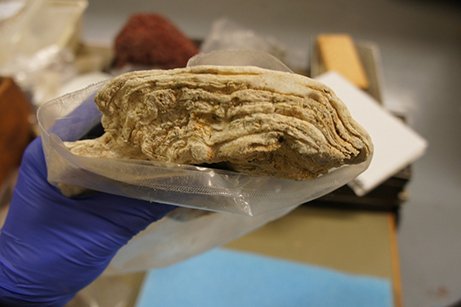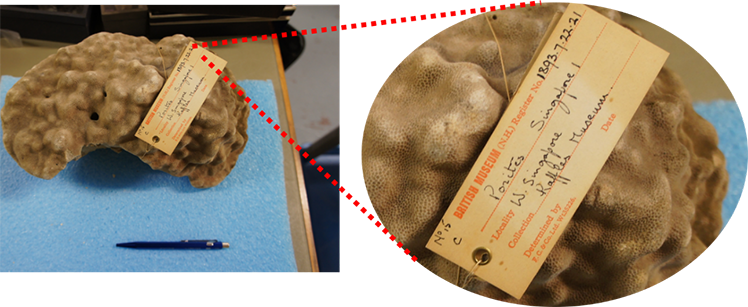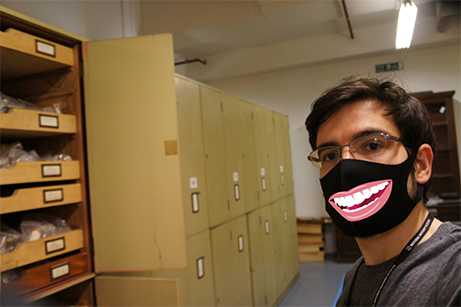By Leonardo Bertini (ESR at Natural History Museum London)
After many months of working from home, I was very excited to get to visit the Natural History Museum (NHM) collections to look at some specimens for my research. This was my first time back to the NHM Coral Collection and even though you cannot see my whole face because of me wearing personal protective equipment, I had a huge smile behind the face mask. Exploring the collections and going through dozens of dusty cabinets full of skeletons of Porites sp never felt so good. It really felt like the months of working on my research from my computer was now finally coming to life!
A substantial part of my research involves gathering data of massive corals from turbid water environments in the Coral Triangle across different museum collections. I like to call this part of my research ‘data scavenging’ because it involves finding skeletons from different points in time to be able to build some timelines of coral growth rates and study how bioerosion intensity and community composition changed over the last two centuries. I spent all morning sorting through the drawers and found some very interesting specimens!
By the time I came across some nice samples from Singaporean waters, I was approaching lunchtime and could not help but see a sandwich-like skeleton in my hands. So I decided it was time for a break to have some lunch.

Figure 1: Side view of a skeleton of massive Porites with an apparent layered structure.
After a quick lunch, I started to sort and register all the prospective specimens that I could eventually take to the CT lab for scanning, once the CT lab resumes its activities. When I looked at the labels of some of the oldest specimens, I wondered how much of our world has changed since they had been collected in the field. Some of the oldest ones I found were still sealed air-dried skeletons dating back to 1890’s, a period when the oceans experienced just a fraction of the amount of man-made disturbances and pollution that coral reefs are subject to nowadays.

Figure 2: Skeleton of massive Porites collected from Singaporean waters dating back to the late 1800s.
Time went by so quickly despite me being immersed in the collection from 10 am to 5 pm. I cannot wait to be back at the collection and see what else is out there waiting to tell their story about how coral reefs used to look like some 200 years ago.






